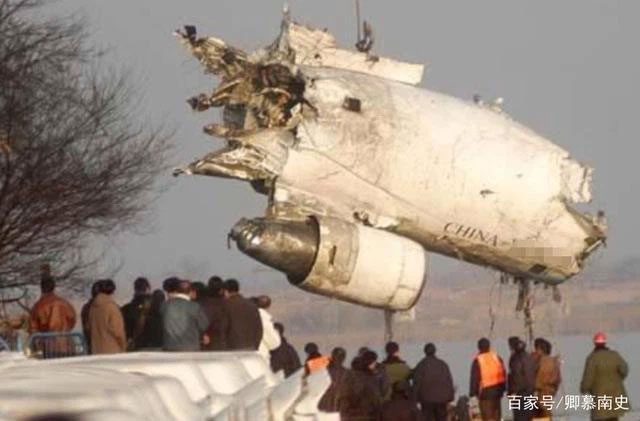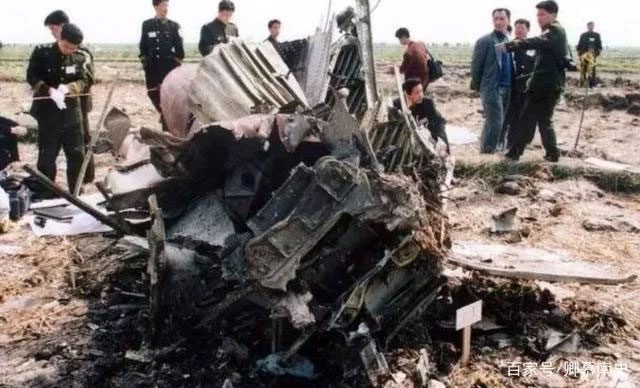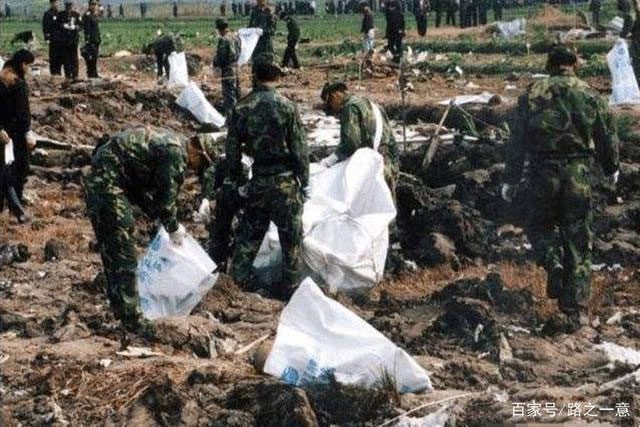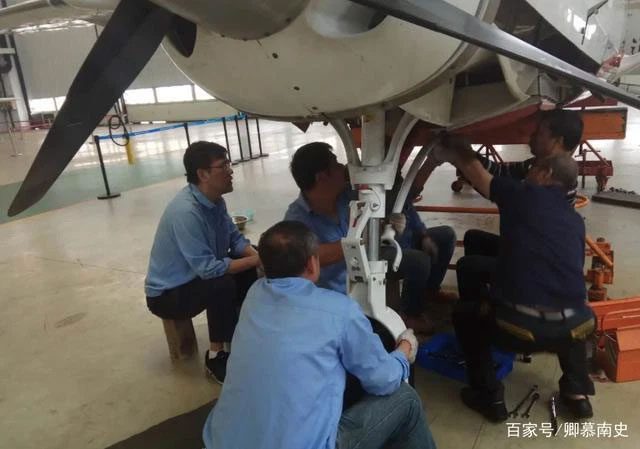Errors in plug connection during a flight led to the aircraft crashing, resulting in the loss of 160 passengers’ lives.
On a morning in early June 1994, residents of Chuyi Head village in Xi’an, Shaanxi Province, China, were working in the fields when they suddenly heard a loud noise coming from the sky. Shortly after, some paper money, jewelry, and other strange objects began to fall from the sky. Believing it to be a gift from God, the villagers joyfully rushed to collect the items.
However, just a few minutes later, the crowd quickly dispersed in sheer panic as they witnessed a large object engulfed in flames plummeting towards the Sanhe River.
 Villagers witness the plane crash up close (Photo: Baijiahao)
Villagers witness the plane crash up close (Photo: Baijiahao)
Despite their curiosity about this rare phenomenon, no one dared to approach the scene; they quickly reported the incident to local authorities.
The villagers were unaware that: What they had just witnessed was one of the most catastrophic plane crashes in the history of Chinese aviation.
The Fatal Flight
As usual, at 8:15 AM, flight WH2303 took off from Xi’an Xianyang International Airport, carrying 146 passengers and 14 crew members bound for Guangzhou.
However, just 24 seconds after takeoff, the aircraft began to experience unusual turbulence, deviating 20 degrees from a safe balance, accompanied by strange noises emanating from the fuselage.
Inside the cabin, passengers began to panic, and flight attendants quickly reassured them, explaining that this was a common occurrence during unstable air currents and not a cause for concern, while instructing everyone to fasten their seatbelts.
The aircraft was piloted by three experienced pilots who calmly managed the situation, maintaining an altitude of 400 km/h. However, despite reaching the stratosphere, the turbulence worsened instead of easing.

Just 24 seconds after takeoff, the plane showed abnormalities (Illustrative photo: Baijiahao)
The aircraft continued to deviate from standard balance, prompting the captain to switch to autopilot while ordering checks on the operational equipment, hoping to improve the situation. However, control of the aircraft became increasingly difficult, forcing the captain to disable autopilot.
Shortly after, the aircraft lost its orientation and began to turn sharply to the right. At this point, the plane had reached an altitude of over 4,700 meters, but the ascent was alarmingly slow, causing panic and extreme tension among the crew.
Noticing the aircraft’s unstable condition, the ground control tower immediately instructed the crew to return to the airport, clearing the surrounding airspace and summoning technical staff and executives to address the issue.
However, at this moment, the tragedy was completely out of control; just 9 minutes after takeoff, the aircraft suddenly veered to the left and plummeted from an altitude of 4,100 meters to 2,884 meters in ten seconds.
Ultimately, with two loud explosions, the aircraft’s fuselage could not withstand the immense overload and disintegrated in mid-air.
Two Small Plugs Causing a Major Disaster
After the accident, the Shaanxi provincial government quickly deployed a large number of rescue and medical personnel to the scene. The crash site was only 49 km from Xi’an Xianyang International Airport, where the flight had taken off.

The plane shattered into many pieces (Photo: Baijiahao)
According to the autopsy report, under the tremendous pressure from the high-altitude air currents, most victims died from skull fractures and multiple broken bones. It was very difficult to find a complete body, making identification extremely challenging.
The cockpit of the aircraft was detached from the fuselage, and no crew members in the cockpit survived. The only passenger who was still alive when found died within 10 minutes.
Relevant departments of the Civil Aviation Administration of China immediately formed an investigation team to search for the black box and debris of the aircraft to determine the cause of this major accident.

To this day, many victims remain unidentified (Illustrative photo: Baijiahao)
Shortly thereafter, investigators discovered an anomaly in the wreckage of the aircraft: Two plugs on the aircraft’s autopilot control were connected incorrectly!
A Tragedy Caused by Multiple Small Mistakes
According to standard procedures, pre-flight inspections are conducted very rigorously and must follow a three-stage verification process: self-check by maintenance staff, a second check, and finally, a thorough inspection by a supervisor.
This is key to ensuring that the aircraft can safely complete its mission. Therefore, the reversal of the two plugs should have been nearly impossible.

The aircraft underwent maintenance before the tragedy (Illustrative photo: Baijiahao)
Relevant departments immediately investigated the maintenance and repair records and discovered that the errors were due to human negligence.
According to the maintenance records of the airline, just one day before flight WH2303 took off, on June 4, the aircraft had undergone maintenance.
However, despite the experienced maintenance technician, he did not comply with regulations, allowing two unlicensed interns to participate in the work process without proper supervision. As a result, the two new employees connected the plugs incorrectly and failed to conduct a self-check.
Later, when the operating staff turned on the power connection, he did not notice any unusual issues. The equipment was powered back on for testing, but still showed no abnormalities.
On the other hand, the supervisor responsible for the inspection left the scene that day without permission. He did not recheck the equipment status according to the standard procedure but carelessly signed off on the maintenance approval form.
Thus, no checks were conducted according to standard procedures during the last maintenance of the aircraft. The negligence in their duties led to a tragedy for the entire flight crew, claiming the lives of many innocent people.
The maintenance staff and supervisor subsequently faced legal penalties, receiving sentences of 7 years and 4 years in prison, respectively. However, even though the perpetrators were punished, the pain of the families of the 160 victims due to their carelessness will never fade.

















































